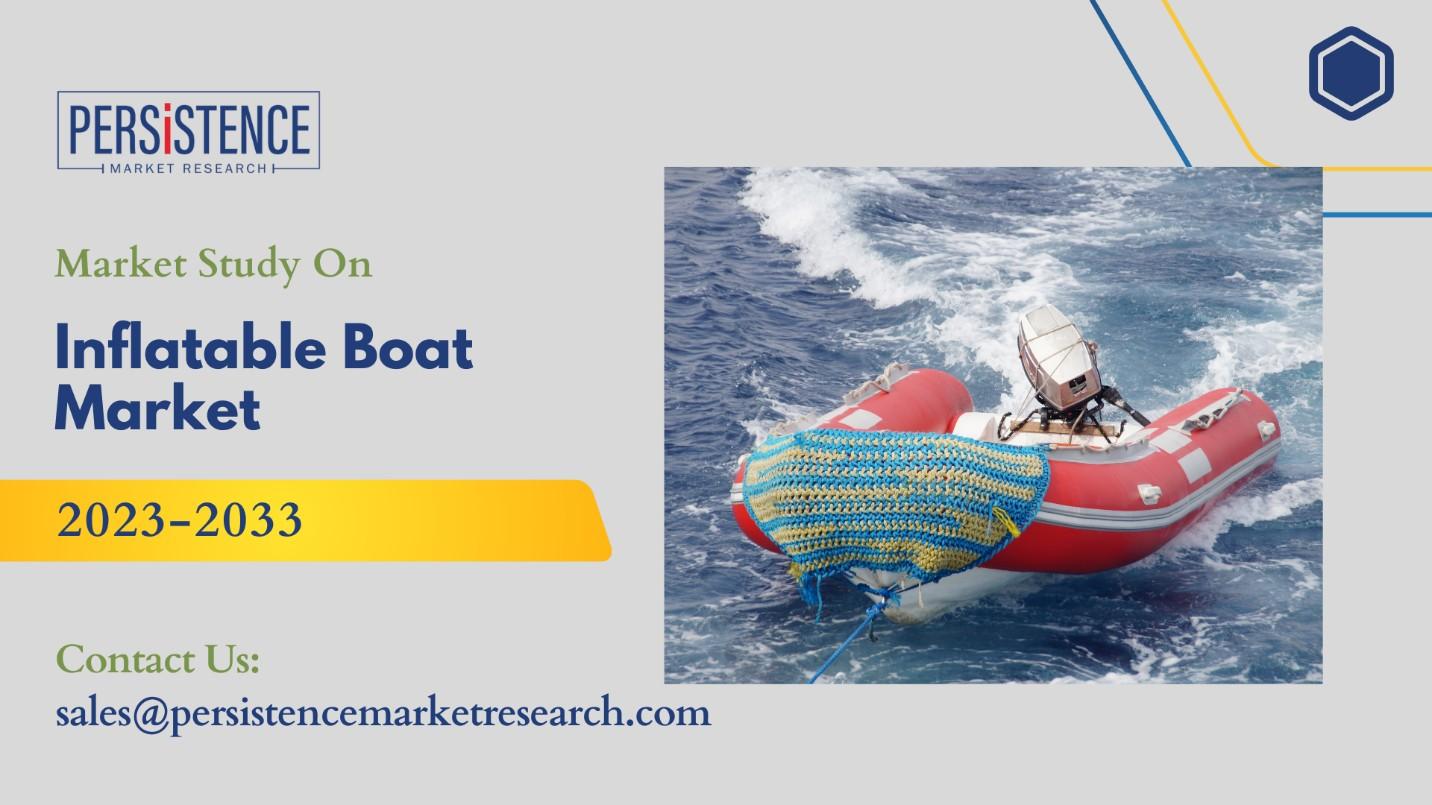Title: How Technological Advances Are Shaping the Inflatable Boat Industry
Abstract:
Market Overview:
According to Persistence Market Research, the global inflatable boats market is currently valued at around US$ 1.9 billion, and is anticipated to progress at a CAGR of 3.9% to reach US$ 2.9 billion by 2033.
The inflatable boat industry has undergone significant transformation in recent years, driven by rapid technological advancements. From improvements in materials and manufacturing processes to innovations in design and functionality, these advancements are reshaping the industry, enhancing performance, safety, and user experience. This article explores the key technological developments influencing the inflatable boat industry and their impact on the market.

Advanced Materials and Construction Techniques
a. High-Performance Fabrics
One of the most significant technological advancements in inflatable boats is the development of high-performance fabrics. Traditional materials such as PVC have been largely replaced or enhanced by modern composites like Hypalon (CSM) and polyurethane. These advanced fabrics offer superior durability, UV resistance, and abrasion resistance, which are crucial for the longevity and performance of inflatable boats.
For instance, Hypalon-coated fabrics are known for their resistance to extreme weather conditions and chemicals, making them ideal for demanding marine environments. Meanwhile, polyurethane fabrics are lighter and offer better flexibility, contributing to improved handling and ease of storage.
b. Drop-Stitch Technology
Drop-stitch technology has revolutionized the construction of inflatable boats. This method involves thousands of polyester threads connecting the upper and lower layers of the boat’s fabric, creating a rigid, high-pressure structure. Drop-stitch boats can achieve a level of rigidity comparable to traditional hard-shell boats while maintaining the lightweight and portable advantages of inflatable designs. This technology allows for greater stability, improved performance, and enhanced user comfort.
Request for Sample@ https://www.persistencemarketresearch.com/samples/18664
Enhanced Design and Performance Features
a. Integrated Air Pressure Systems
Modern inflatable boats often come equipped with integrated air pressure systems that enhance performance and user convenience. These systems allow for precise control of air pressure, ensuring optimal boat rigidity and stability. Some advanced models feature built-in air pumps that automate the inflation and deflation process, reducing the time and effort required to prepare the boat for use.
b. Improved Hull Designs
Technological advances in hull design have led to significant improvements in inflatable boat performance. Innovations such as V-shaped hulls and multi-chamber configurations enhance stability, maneuverability, and speed. These designs help reduce drag and increase efficiency, making inflatable boats more versatile and suitable for a wider range of water conditions.
c. Modular and Customizable Designs
Inflatable boats are increasingly featuring modular and customizable designs. Users can now choose from a variety of configurations, such as detachable seats, removable floors, and adjustable transoms. This customization allows boaters to tailor their inflatable boats to specific needs, whether for recreational use, fishing, or professional applications.
Technological Integration and Smart Features
a. GPS and Navigation Systems
The integration of GPS and navigation systems into inflatable boats represents a significant advancement in maritime technology. Modern inflatable boats can be equipped with GPS devices, chartplotters, and fish finders, enhancing safety and navigation. These systems provide real-time location tracking, route planning, and environmental monitoring, making boating experiences more enjoyable and secure.
b. Digital Connectivity
Inflatable boats are also benefiting from digital connectivity features. Some models come with builtin Bluetooth speakers, USB charging ports, and wireless communication systems. These technologies enhance the boating experience by providing entertainment options, enabling device charging, and facilitating communication with other boaters or emergency services.
Sustainability and Eco-Friendly Technologies
a. Environmentally Friendly
Materials
The inflatable boat industry is increasingly focused on sustainability and reducing its environmental footprint. Advances in eco-friendly materials, such as recycled plastics and biodegradable coatings, are making inflatable boats more environmentally friendly. Manufacturers are also adopting sustainable production practices to minimize waste and reduce energy consumption.
b. Energy-Efficient Accessories
Energy-efficient accessories, such as solar-powered chargers and LED lighting, are becoming more common in inflatable boats. These technologies help reduce reliance on traditional power sources and promote environmental stewardship. Solar panels can power onboard electronics, while LED lights offer brighter illumination with lower energy consumption.
Safety and Security Enhancements
a. Advanced Safety Features
Technological advancements have also led to the development of advanced safety features for inflatable boats. These include improved buoyancy systems, enhanced emergency signaling devices, and integrated life-saving equipment. Modern inflatable boats often come with features such as automatic bilge pumps, reflective tape for increased visibility, and reinforced safety handles.
b. Anti-Collision Systems
Anti-collision systems, including sonar and radar technologies, are becoming increasingly available in inflatable boats. These systems help detect potential obstacles and hazards, reducing the risk of accidents and collisions. They are especially valuable for boaters navigating unfamiliar waters or operating in busy marine environments.
Market Impact and Future Trends
The integration of these technological advancements is having a profound impact on the inflatable boat market. The industry is experiencing increased demand for high-performance, versatile, and user-friendly inflatable boats. Technological innovations are driving competition among manufacturers, leading to the development of more advanced and affordable products.
Looking ahead, the inflatable boat industry is likely to continue evolving with further advancements in materials, design, and technology. Trends such as increased customization, enhanced digital integration, and a focus on sustainability will shape the future of inflatable boating. As technology continues to advance, the industry will likely see even greater improvements in performance, safety, and overall user experience.
Technological advances are transforming the inflatable boat industry, driving innovation and enhancing the performance, safety, and user experience of these versatile watercraft. From highperformance materials and advanced construction techniques to smart features and eco-friendly technologies, the advancements are reshaping the market and expanding the possibilities for inflatable boating.
As technology continues to evolve, the inflatable boat industry will undoubtedly experience further growth and development. For consumers and manufacturers alike, staying abreast of these advancements will be crucial in leveraging the full potential of inflatable boats and meeting the demands of the modern boating experience.
Follow Us: LinkedIn | Medium | Twitter
